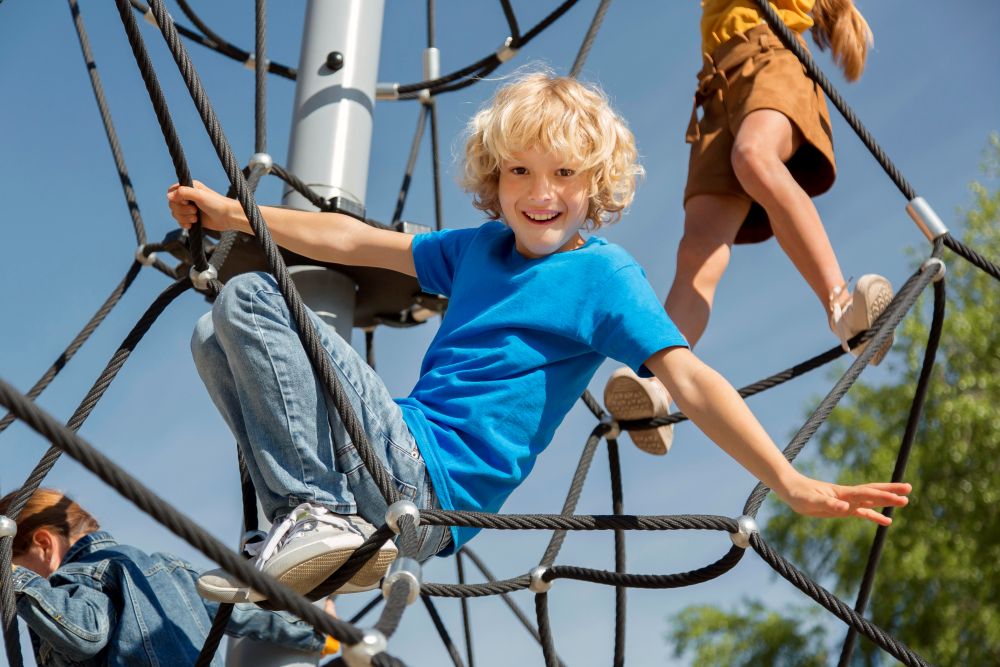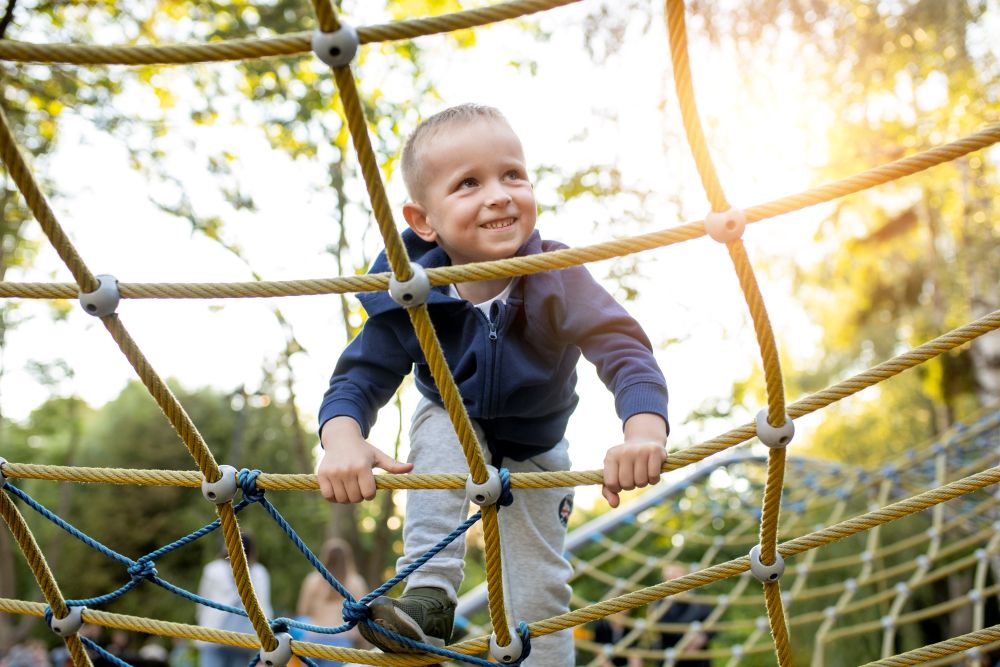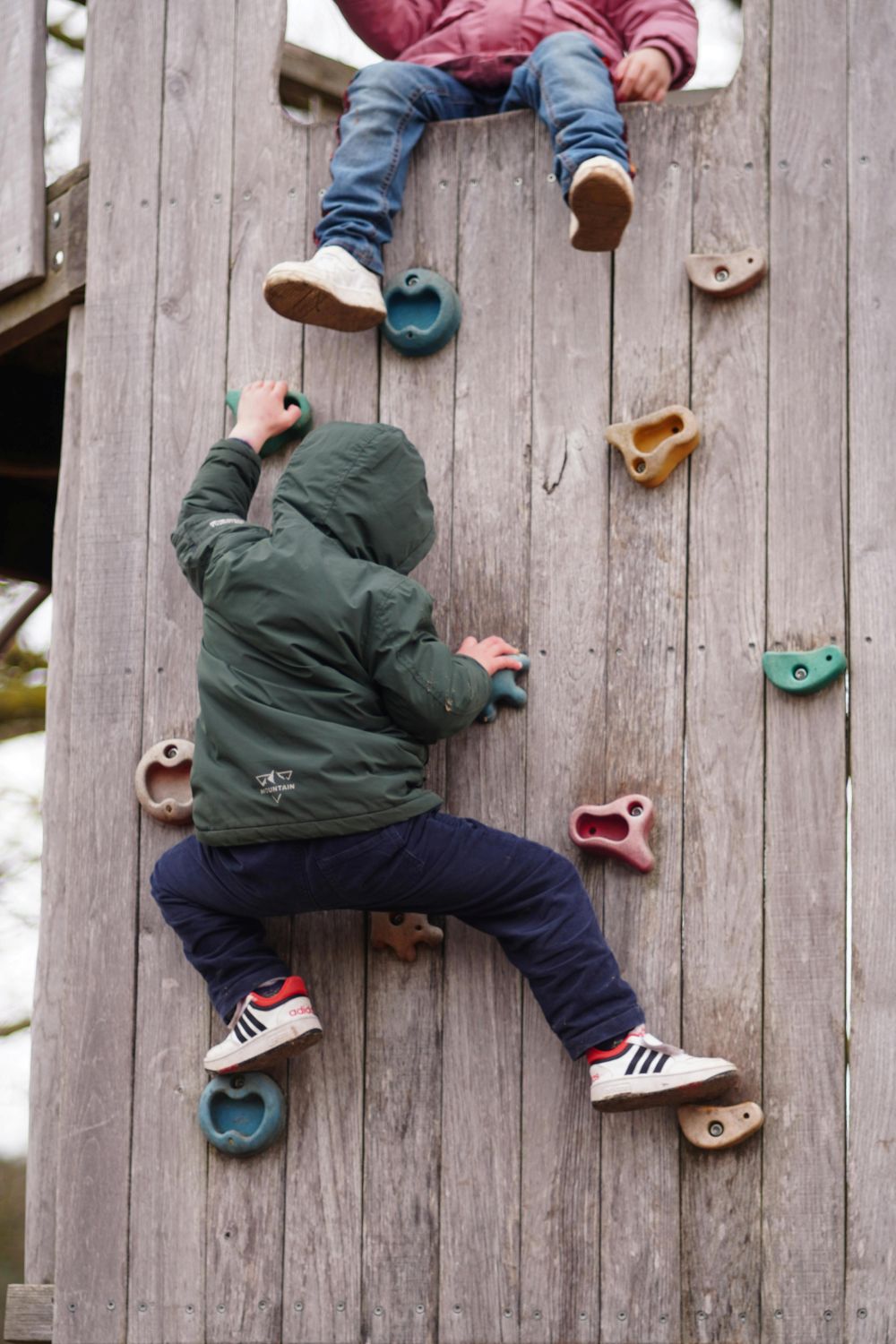Raising Resilient Kids:
How Outdoor Challenges Build Confidence and Grit
In a world full of instant answers, constant connectivity, and increasing pressure on children, resilience has become one of the most important life skills we can nurture in our kids. Resilience isn’t about “toughing it out” , it’s about learning how to adapt, bounce back from setbacks, and face challenges with curiosity rather than fear.
While books and classrooms play a role, resilience is often built in the places we least expect: on the climbing frame, during a tricky bounce on the trampoline, or halfway through a wobbly bike ride. These seemingly simple outdoor moments give children space to test limits, recover from tumbles, and feel the pride that comes from overcoming something on their own.

April 30, 2025
Share:
The Role of Outdoor Play in Building Resilience
Outdoor play invites challenge in its purest form. Unlike many indoor games or screen-based activities, the outdoors is naturally unpredictable. Weather changes, uneven terrain, and physical obstacles create opportunities for kids to think on their feet, adjust their plans, and develop problem-solving skills.
When a child climbs a frame for the first time, navigates a new section of the garden, or figures out how to balance on a cargo bike ride — they’re not just playing. They’re learning to assess risks, trust their instincts, and keep trying even when it’s difficult.
These are the foundations of grit and resilience: not perfection, but persistence.
The Confidence That Comes From “I Did It!”
Children gain a huge amount of self-worth from mastering physical challenges. That moment when they finally reach the top of the climbing frame or land a steady bounce is more than just fun, it’s confidence-building. It shows them they are capable, strong, and adaptable.
Importantly, these wins are earned through effort and repetition. Outdoor toys like trampolines and climbing frames offer the perfect balance of fun and difficulty, giving kids the freedom to learn at their own pace, while still feeling the natural satisfaction of progress.
And unlike structured sports or performance-based tasks, free play has no pressure to “get it right.” Children can explore, make mistakes, and try again in their own time, learning that failure isn’t something to fear, but a step toward success.
Encouraging Healthy Risk-Taking
One of the key elements of resilience is the ability to take appropriate risks and the outdoors is an ideal environment for developing this. When kids try a higher jump, reach for a new climbing hold, or steer their cargo bike down a different path, they’re learning to listen to their bodies, trust their judgment, and build courage.
These kinds of physical challenges help children understand limits in a natural way. They learn what they’re ready for and what they’re not while building the internal tools to regulate emotions like fear, frustration, and excitement.
Family Support Makes It Stronger
While independence is important, resilience isn’t built in isolation. When children are encouraged, supported and not pushed, they’re more likely to take risks confidently and bounce back from setbacks more easily.
As parents and carers, simply being nearby, cheering from the garden bench, or hopping on the cargo bike for a weekend ride can make all the difference. Shared outdoor experiences strengthen family bonds and remind children that they’re safe, supported, and loved even when things feel challenging.
At Outdoor Fun Toys, we believe that outdoor play is about more than fun. It’s about helping children grow into confident, curious, and emotionally strong individuals. Our carefully selected range of trampolines, climbing frames, playhouses, and cargo bikes is designed to support real growth — one challenge, one bounce, one brave climb at a time.




A Final Thought
Resilience isn’t something kids are born with. It’s something they build, moment by moment. And the garden, the park, or the open road might just be the perfect classroom.
So let them climb. Let them fall and try again. Let them bounce, explore, wobble, and laugh. Because every time they rise after a stumble, they’re not just playing , they’re becoming stronger.
- Outdoor Fun Toys
